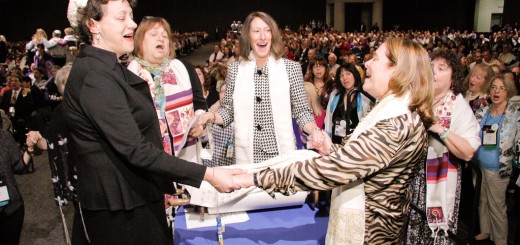Controversies

Going once, going twice….On Nov.9 an unusual auction will be held in Manhattan, at the Kestenbaum auction house. Today, Wednesday Nov.8 (19bHeshvan) is the last chance to see the pre-auction exhibit of the most astounding collection of books, called the Valmadonna Trust. The exhibit and auction are at Kestenbaum 242 W.30th www.kestenbaum.net
(Wednesday open to the public 10am to 6 pm; auction Thursday Nov.9 at 3pm)
Don’t be put off by the name. Valmadonna has nothing to do with Christianity or singers. Valmadonna is the name of a hamlet … oops!… village near Turin where Jack Lunzer, z”l, had family connections. Mr. Lunzer collected as a hobby the greatest, most valuable private assembly of Jewish books in the world. His first yahrzeit will be this winter. He was an observant British diamond businessman, and had a passion for rare and unusual Judaica – he sheltered in his home some 11,000 items he collected from around the world, spanning six centuries. Before parts were sold recently, the complete collection was valued at 30 million dollars.
If you cannot visit the exhibit in person, read about it in the Times of Israel which included a moving video of the late Jack Lunzer (embedded at the end of this post). You can also visit vicariously by perusing the catalog (3D or pdf) www.kestenbaum.net. Residing in Netanya, I could not go in person. However I asked my Manhattan-based daughter to go to Kestenbaum’s and ask for three volumes in particular and tell me about them. Since cross-currents readers often engage in controversies, I chose three volumes that reflect controversies from different periods and places.
Lot 67 describes a volume by Azariah de Rossi who was a member of an Italian Jewish family that traced its ancestry back to the time of Titus and the destruction of Jerusalem. His controversial Me’or Einaim questioned conventional medieval wisdom and introduced fundamental changes in chronology. This copy was printed in Mantua in 1574 and is going for $4000-5000.
I do not know enough to take sides in this controversy. The catalog explains that Me’or Einaim was “viewed as heresy and the work was banned by the Rabbinic authorities upon publication. Consequently De Rossi re-issued the work the same year, having changed the offending passages and adding an apologetic post-script.
THE PRESENT LOT CONTAINS BOTH ISSUES OF THE ME’OR EINAIM [sic, capitals in the catalog]: The original first edition with the full unexpurgated text; and the second issue with the author’s alterations, seeking to allay public objection.”
Another volume, lot 196 is printed on blue-greenish paper. The catalog introduction says SOLOMON IBN ADRET (RaSHB”A). Torath HaBayith Ha’Aruch. “A sole example printed on blue-green paper in Prague in 1735 is one of very few books on coloured paper from this city, all the more exceptional as it comes from the library of Jonathan Eybeschuetz, then in Metz in France, and one can only speculate whether the greenish paper hints daringly at Sabbatianism .” I wrote the Kestenbaums asking why greenish paper hints at Sabbatianism. Puzzling.
A third example of controversy is the seemingly tame Mahzor in lot 147 Sha’ar Bath Rabim. It is according to Aschkenazi rite, printed in Venice 1596 ($3000-5000) with commentary Hadrath Kodesh by Isaac Segal of Herrlisheim. Explains the catalog, “Segal defends the recitation of the somewhat controversial piyut Malachei Rachamim – that beseeches God via the mediation of angels.”
http://www.kestenbaum.net/content.php?subj=search&item=24090&pos=2
Hundreds of examples range from obscure (Jewish book in Urdu) to the beautiful (on pink or blue paper, with lavish illustrations). I described only one small aspect of this alluring library: the controversies. One can imagine how controversies must have flared in the previous centuries, as they do now, and as they are reflected in the passionate discussions on cross-currents.
Thank you, Mr. Lunzer z”l for sharing your passion with us.



This exhibit was shown at Sothebys in NYC a mumber of years ago. It was an amazing display and tribute to why we are indeed the People of the Book.
“I do not know enough to take sides in this controversy.”
This is how Rav Shimon Schwab summarizes Me’ or Einayim on chronology in his “Comparative Jewish Chronology” essay( “Selected Speeches”, pg. 262) :
“…Even centuries ago, in his Me’ or Einayim (XXXV), Azariah de Rossi, a controversial figure in the
annals of our people, criticized the puzzling texts of Seder Olam and of the Talmud, much to the righteous indignation of contemporary and, later, Rabbinic scholars (cf. R. David Gans in Tzemach David [No. 3448] and R. Yaakov Emden to Seder Olam XXX).”
Seforim Blog had some good articles on the Trust when it was first displayed a number of years ago. Just google “Seforim Blog” and “Valmadonna Trust”.
Much of the Maharal’s Beer HaGolah takes aim at the Meor Einayim.
Torah Musing had a post listing those who quote from Me’or Einayim over the years:
https://www.torahmusings.com/2006/03/meor-einayim/
Artscroll included him in one of their biography collections back in the day.
I didn’t know about Artscroll, but Chabad.com has an interesting, fair-size entry from R. Nissan Mindel (Kehot Publication Society):
“Azariah dei Rossi was a well-known Jewish scholar, author and physician, who died in Italy a little less than four hundred years ago…
Some of his writings, as they appeared in the third part of his work, raised a great deal of objections on the part of leading Rabbis of his day as soon as they were published. The Rabbis feared that his views might be misunderstood and misinterpreted. The book was therefore banned for students under the age of twenty-five. Azariah wrote a defense, in which he explained that his position was in full accord with Jewish tradition.”
I wonder if the Rebbe wrote anything on the topic…